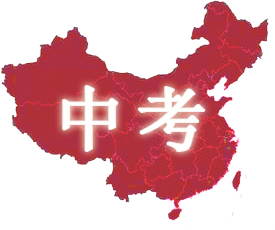

重阳节英语作文:Double Ninth Festival
Double Ninth Festival
The 9th day of the 9th lunar month is the traditional Chongyang Festival, or Double Ninth Festival. It usually falls in October in the Gregorian calendar. In an ancient and mysterious book Yi Jing, or The Book of Changes, number 6 was thought to be of Yin character, meaning feminine or negative, while number 9 was thought to be Yang, meaning masculine or positive. So the number nine in both month and day create the Double Ninth Festival, or Chongyang Festival. Chong in Chinese means double. Also, as double ninth was pronounced the same as the word to signify forever, both are Jiu Jiu, the Chinese ancestors considered it an auspicious day worth celebration. That's why ancient Chinese began to celebrate this festival long time ago.
The custom of ascending a height to avoid epidemics was passed down from long time ago. Therefore, the Double Ninth Festival is also called Height Ascending Festival. The height people will reach is usually a mountain or a tower. Ancient literary figures have left many poems depicting the activity. Even today, people still swarm to famous or little known mountains on this day.
On this day, people will eat Double Ninth Gao (or Cake). In Chinese, gao (cake) has the same pronunciation with gao (height). People do so just to hope progress in everything they are engaged in. There is no fixed ways for the Double Ninth Cake, but super cakes will have as many as nine layers, looking like a tower.
The Double Ninth Festival is also a time when chrysanthemum blooms. China boasts diversified species of chrysanthemum and people have loved them since ancient times. So enjoying the flourishing chrysanthemum also becomes a key activity on this festival. Also, people will drink chrysanthemum wine. Women used to stick such a flower into their hair or hang its branches on windows or doors to avoid evilness. joozone.com
In 1989, the Chinese government decided the Double Ninth Festival as Seniors' Day. Since then, all government units, organizations and streets communities will organize an autumn trip each year for those who have retired from their posts. At the waterside or on the mountains, the seniors will find themselves merged into nature. Younger generations will bring elder ones to suburban areas or send gifts to them on this day.
农历九月九日,为传统的重阳节。因为古老的《易经》中把六定为阴数,把九定为阳数,九月九日,日月并阳,两九相重,故而叫重阳,也叫重九,古人认为是个值得庆贺的吉利日子,并且从很早就开始过此节日。
在古代,民间在重阳有登高的风俗,故重阳节又叫登高节。相传此风俗始于东汉。唐代文人所写的登高诗很多,大多是写重阳节的习俗;杜甫的七律《登高》,就是写重阳登高的名篇。登高所到之处,没有划一的规定,一般是登高山、登高塔。
在这一天,人们还有吃重阳糕的习俗。在汉语里,糕与高同音,,人们会用吃糕代替登高,祝愿百事俱高。重阳糕又称花糕、菊糕、五色糕,制无定法,较为随意。最高的有九层,像一个塔。
重阳节正是一年的金秋时节,菊花盛开,民间还把农历九月称为菊月,在菊花傲霜怒放的重阳节里,观赏菊花成了节日的一项重要内容,当然,人们也会喝一些菊花酒。女人会把茱萸插在头上或挂在门口,可以避难消灾。
今天的重阳节,被赋予了新的含义,在1989年,我国把每年的九月九日定为老人节,传统与现代巧妙地结合,成为尊老、敬老、爱老、助老的老年人的节日。全国各机关、团体、街道,往往都在此时组织从工作岗位上退下来的老人们秋游赏景,或临水玩乐,或登山健体,让身心都沐浴在大自然的怀抱里;不少家庭的晚辈也会搀扶着年老的长辈到郊外活动或为老人准备一些可口的饮食。
重阳节英语作文:中国传统节日重阳节
Double Ninth Festival
The 9th day of the 9th lunar month is the traditional Chongyang Festival, or Double Ninth Festival. It usually falls in October in the Gregorian calendar. In an ancient and mysterious book Yi Jing, or The Book of Changes, number 6 was thought to be of Yin character, meaning feminine or negative, while number 9 was thought to be Yang, meaning masculine or positive. So the number nine in both month and day create the Double Ninth Festival, or Chongyang Festival. Chong in Chinese means double. Also, as double ninth was pronounced the same as the word to signify forever, both are Jiu Jiu, the Chinese ancestors considered it an auspicious day worth celebration. That's why ancient Chinese began to celebrate this festival long time ago.
The custom of ascending a height to avoid epidemics was passed down from long time ago. Therefore, the Double Ninth Festival is also called Height Ascending Festival. The height people will reach is usually a mountain or a tower. Ancient literary figures have left many poems depicting the activity. Even today, people still swarm to famous or little known mountains on this day.
On this day, people will eat Double Ninth Gao (or Cake). In Chinese, gao (cake) has the same pronunciation with gao (height). People do so just to hope progress in everything they are engaged in. There is no fixed ways for the Double Ninth Cake, but super cakes will have as many as nine layers, looking like a tower.
The Double Ninth Festival is also a time when chrysanthemum blooms. China boasts diversified species of chrysanthemum and people have loved them since ancient times. So enjoying the flourishing chrysanthemum also becomes a key activity on this festival. Also, people will drink chrysanthemum wine. Women used to stick such a flower into their hair or hang its branches on windows or doors to avoid evilness.
In 1989, the Chinese government decided the Double Ninth Festival as Seniors' Day. Since then, all government units, organizations and streets communities will organize an autumn trip each year for those who have retired from their posts. At the waterside or on the mountains, the seniors will find themselves merged into nature. Younger generations will bring elder ones to suburban areas or send gifts to them on this day.
农历九月九日,为传统的重阳节。因为古老的《易经》中把六定为阴数,把九定为阳数,九月九日,日月并阳,两九相重,故而叫重阳,也叫重九,古人认为是个值得庆贺的吉利日子,并且从很早就开始过此节日。
在古代,民间在重阳有登高的风俗,故重阳节又叫登高节。相传此风俗始于东汉。唐代文人所写的登高诗很多,大多是写重阳节的习俗;杜甫的七律《登高》,就是写重阳登高的名篇。登高所到之处,没有划一的规定,一般是登高山、登高塔。
在这一天,人们还有吃重阳糕的习俗。在汉语里,糕与高同音,,人们会用吃糕代替登高,祝愿百事俱高。重阳糕又称花糕、菊糕、五色糕,制无定法,较为随意。最高的有九层,像一个塔。
重阳节正是一年的金秋时节,菊花盛开,民间还把农历九月称为菊月,在菊花傲霜怒放的重阳节里,观赏菊花成了节日的一项重要内容,当然,人们也会喝一些菊花酒。女人会把茱萸插在头上或挂在门口,可以避难消灾。
今天的重阳节,被赋予了新的含义,在1989年,我国把每年的九月九日定为老人节,传统与现代巧妙地结合,成为尊老、敬老、爱老、助老的老年人的节日。全国各机关、团体、街道,往往都在此时组织从工作岗位上退下来的老人们秋游赏景,或临水玩乐,或登山健体,让身心都沐浴在大自然的怀抱里;不少家庭的晚辈也会搀扶着年老的长辈到郊外活动或为老人准备一些可口的饮食。
重阳节有佩茱萸的风俗,因此又被称为茱萸节。茱萸是重阳节的重要标志。重阳节时人们还喜欢佩戴菊花。茱萸雅号辟邪翁,菊花又名延寿客。
茱萸是一种可以做中药的果实,因为出产于吴地(今江浙一带)的茱萸质量最好,因而又叫吴茱萸,也叫越椒或艾子,它是一种常绿小乔木,树几乎可以长到一丈多高,叶为羽状复叶,初夏开绿白色的小花,结实似椒子;秋后成熟。果实嫩时呈黄色,成熟后变成紫红色,有温中、止痛、理气等功效。茱萸叶还可治霍乱,根可以杀虫。《本草纲目》说它气味辛辣芳香,性温热,可以治寒驱毒。古人认为佩带茱萸,可以辟邪去灾。
重阳佩茱萸的习俗在唐代很盛行,人们认为在重阳节这一天插茱萸可以避难消灾;或佩带于臂,或作香袋把茱萸放在里面佩带,称为茱萸囊,还有插在头上的。大多是妇女、儿童佩带,有些地方,男子也佩带。重阳节佩茱萸,在晋代葛洪《西经杂记》中就有记载。除了佩带茱萸,人们也有头戴菊花的。唐代就已经如此,历代盛行。清代,北京重阳节的习俗是把菊花枝叶贴在门窗上,解除凶秽,以招吉祥。这是头上簪菊的变俗。宋代,还有将彩缯剪成茱萸、菊花来相赠佩带的。
重阳茱萸其实也和端午节的雄黄和菖蒲的作用差不多,目的在于除虫防蛀。因为过了重阳节,就是十月小阳春,天气有一段时间回暖;而在重阳以前的一段时间内,秋雨潮湿,秋热也尚未退尽,衣物容易霉变。这段时间又是桂花盛开之时,所以民间称之为桂花蒸,这时必须防虫。茱萸有小毒,有除虫作用,制茱萸囊的风俗正是这样来的。
但是在宋元之后,佩茱萸的习俗逐渐稀见了。其变化的因由大概要从重阳节俗的重心的潜移中去理。重阳在早期民众的时间生活中强调的是避邪消灾,随着人们生活状态的改善,人们不仅关注目前的现实生活,而且对未来生活给予了更多的期盼,祈求长生与延寿。所以延寿客(菊花)的地位最终盖过了避邪瓮(茱萸)。
